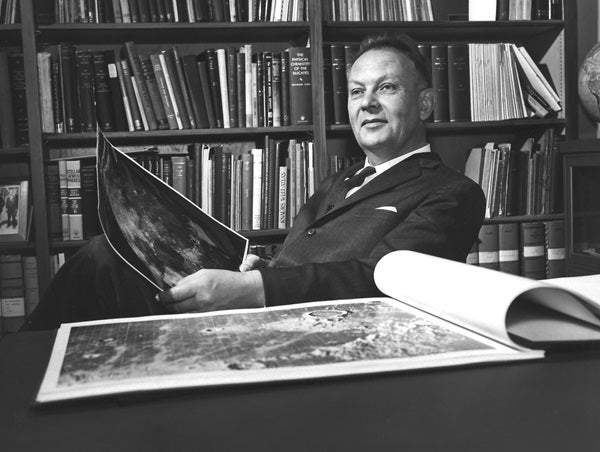History is most often told via trivia.
Christopher Columbus discovered the New World. The Wright Brothers were the first to fly an airplane. And Edwin Hubble realized our universe was expanding. But none of those things are perfectly true.
Science is a slow grind of incremental discovery and acceptance. But for teaching purposes, complexity often is removed and history reduced to factoids — even after facts are established to the contrary. Scientists themselves aren’t beyond blame. Stigler’s law boasts plenty of examples of finds named in honor of someone other than their originator.
And the outer suburbs of our solar system are home to one fine such example: the Kuiper Belt. This third zone of planets hosts perhaps a couple handfuls of Kuiper Belt Objects (KBOs) similar to Pluto (though probably not as interesting), and many thousands more that are comet-sized.
Gerard Kuiper is a pillar of solar system science, but he was far from the first to suggest the region that now bears his name. And according to an article in the International Comet Quarterly, Kuiper didn’t even believe in the continued existence of the region.
So how did KBOs enter astronomy lingo?
Interestingly, the etymology is easily traced because the term “Kuiper Belt” only recently worked its way into common usage. More than 30 years ago, Pluto was commonly thought of as an odd and lonely duck on the fringe of the solar system.
Then, in 1980, Uruguayan astronomer Julio Fernández made a pivotal discovery that gave fine detail to the suggestions of earlier astronomers that a host of comets could lurk at the icy fringes. Fernández’s key paper in the journal Monthly Notices of the Royal Astronomical Society, “On the existence of a comet belt beyond Neptune,” is credited with being the first to correctly describe the Kuiper Belt. And in his introduction, the astronomer cited Kuiper’s work on the comet region but left out some of the other key figures.
Later in the decade, Scott Tremaine, then an astronomer at the University of Toronto, was working with a group of colleagues to test Fernández’s assertion that a belt of bodies past Neptune likely caused the short-period comets we see pass through the inner solar system. Their paper coined the term Kuiper Belt. And it stuck despite attempts at popularizing names that also include the earlier ideas of important figures like Frederick C. Leonard and Kenneth Edgeworth.
For his part, Tremaine told Scientific American last year that he should have more properly named it the Fernández Belt. “It’s probably the wrong term,” he said. “Fernández is really the one we should have named it for.”
Many astronomers now avoid the naming rights issue altogether by simply referring to Pluto and its cousins as trans-Neptunian objects, or TNOs. But that jargonized term is unlikely to catch on with the public.
So, we’re probably stuck with the Kuiper Belt, which is OK by me. Just like Pluto, KBOs are fascinating no matter what you call them.










